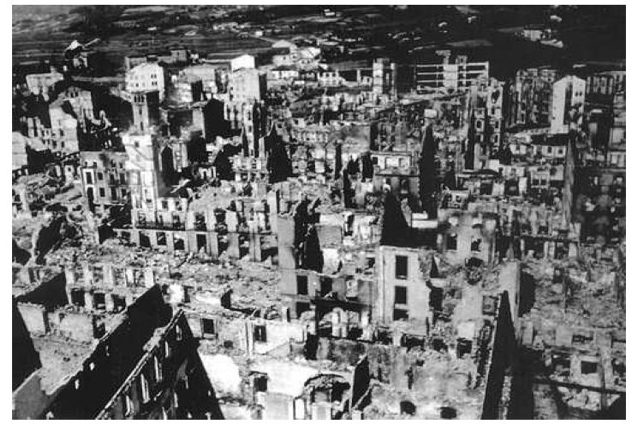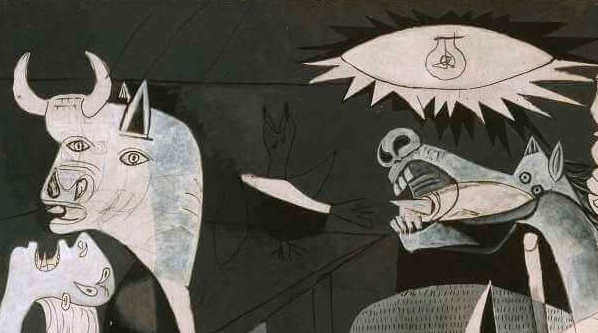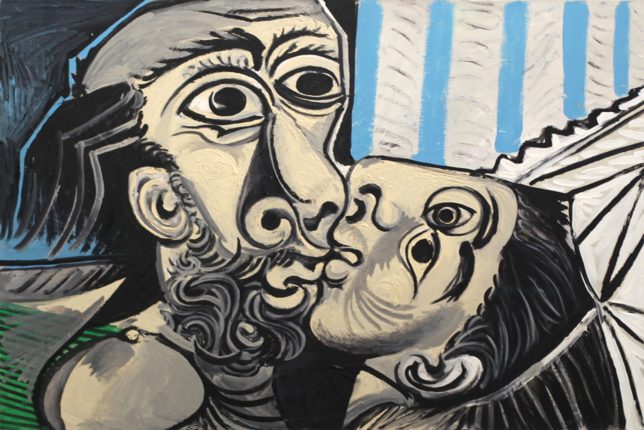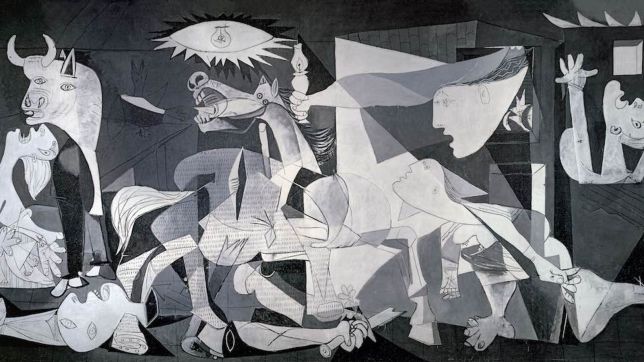
Artwork Analysis: Guernica by Picasso

As the war raged on, Pablo Picasso revealed his mythical Guernica to the MoMA in 1939. He had created the piece two years earlier, but maintained that the piece would not return to Spain until democracy had been restored. It was only after Franco’s death in 1981, that the piece returned to Spain. A new constitution and democratic government was established, so the piece was sent to Madrid and hasn’t left the capital since. Therefore in order to see it, art lovers have no choice but to go to the Reina Sofia Museum in Madrid. Until this happens, Artsper brings the masterpiece to you, introducing one of the most beautiful anti-war paintings in the world.
Why the Theme of War?

In 1937, the Spanish republic asked Picasso to create a large composition for the Paris International Exhibition. This request came just after the most destructive event of the Spanish civil war: the bombing of the small Basque village of Guernica. The commune was destroyed; hundreds had been killed or hurt, all of whom were innocent civilians. Picasso, who was living in Paris at the time, learnt about the ordeal through newspapers. Deeply moved by the testimonies he read and the photographs he saw, Guernica became his enraged cry against this absence of humanity. Picasso’s disdain of the war was evident, and when Nazi ambassador, Otto Abetz stood in front of the piece and asked Picasso if “it was [he] that had made this” Picasso defiantly replied “no, you did”.
What do the figures in the canvas symbolise?

The Lightbulb:
Picasso didn’t illustrate the bombing in a realistic manner, and there aren’t any bombs depicted in the piece. Instead, Picasso uses a light bulb surrounded by a glowing halo of luminous spikes. This symbolises the flames that tore apart the sky during the bombing.
The Horse:
Just under the light bulb the viewer’s attention is drawn to a horse. The animal has been disemboweled by an arrow and is howling in pain. This is emblematic of the suffering inflicted on the Spanish people by the dictators and German bombers. Picasso additionally includes a subliminal skull, formed by the nose and teeth of the horse.
The Bull:
The human-eyed bull evokes the fight between man and beast. Without a doubt, we can see the incarnation of Spanish Nationalist and Totalitarian regimes in this animal.

The Dove:
It is hardly visible, and looks as though it has been rubbed out. This erasure is symbolic of the peace that disappeared in Guernica during the war.
The Woman:
With her head and eyes rolled back, the woman holds her dead baby whilst helplessly reaching out towards the sky. This depiction is reminiscent of portraits of Dora Maar, which Picasso nicknamed “the woman who cries.” Another woman is also shown to the right of the painting: her arms are also raised and her mouth frozen mid-scream. She is surrounded by flames, which are symbolised by the tips of triangles which allude to the explosions caused by the bombs.
The Man with the Sword:
He is the only man and the only figure lying down in the painting. He has been dismembered yet still holds his broken sword, which is emblematic of his heroic yet futile attempt to fight against the terror. A ghostly flower grows by the fighter’s hand, signifying hope despite the bloodshed- much like the shrouded light provided by the woman’s kerosene lamp.
Is Guernica a Surrealist work?

Although Picasso was never officially part of the Surrealist movement, its influence can certainly be seen in this painting. Nightmarish figures and dismembered bodies fill the painting. Guernica combines Cubist structures with a monochrome palette which renders the painting more realistic. It is however the Surrealist images that create the shocking representation of suffering and war.
Does the work have a second hidden meaning?

This theory took not only the art world by storm, but also Spain. University lecturer, José Maria Juarranz de la Fuentes, claims that Guernica depicts the life of the painter. This theory has also previously been suggested by German art dealer, Daniel Henry Kahnweiler. According to this theory, the painting represents three key moments in Picasso’s life: the terrible Malaga earthquake in his childhood, his relationship issues in the 1930s and the suicide of his friend, Carlos Casagemas. This means the figures in the painting would also have different meanings, for example the horse is suggested to be emblematic of Olga Khokhlova, Picasso’s first wife who is often depicted as an animal in his other paintings.

Picasso never gave an official interpretation of Guernica, refusing to be seen as a political artist. However, in depicting such subject matter he created a heavily political work, where Guernica is a symbolic protest for peace.

About Artsper
Founded in 2013, Artsper is an online marketplace for contemporary art. Partnering with 1,800 professional art galleries around the world, it makes discovering and acquiring art accessible to all.
Learn more













